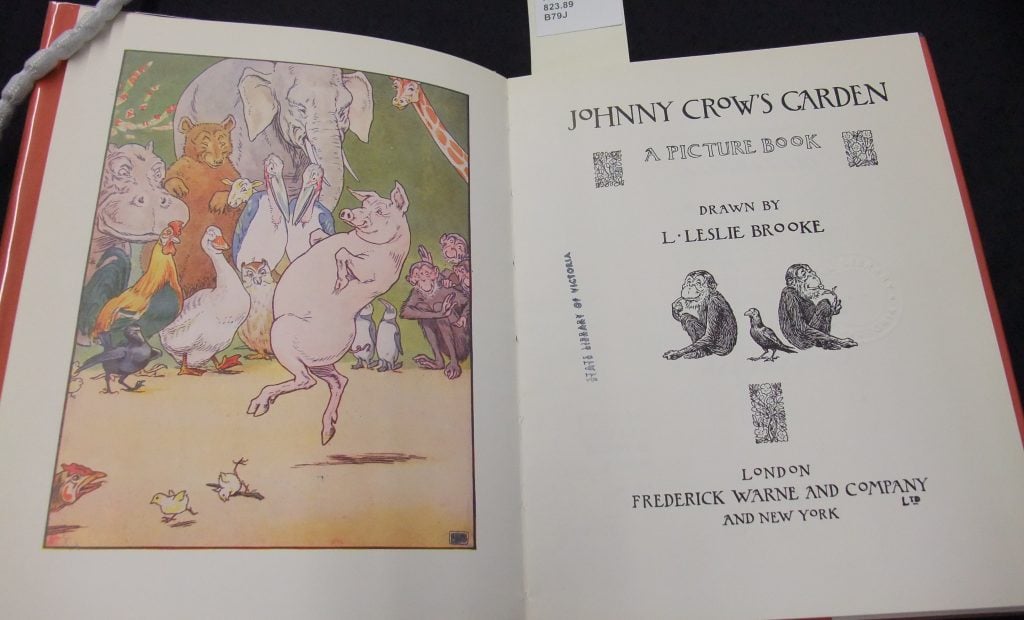
Johnny Crow’s Garden (1903) title page
With wit and skill, Leslie Brooke (1862-1940) crafted a series of children’s books in the early decades of the twentieth century called the Johnny Crow stories, based on a game his family played when he was a child.

Johnny Crow’s party (1907), title page
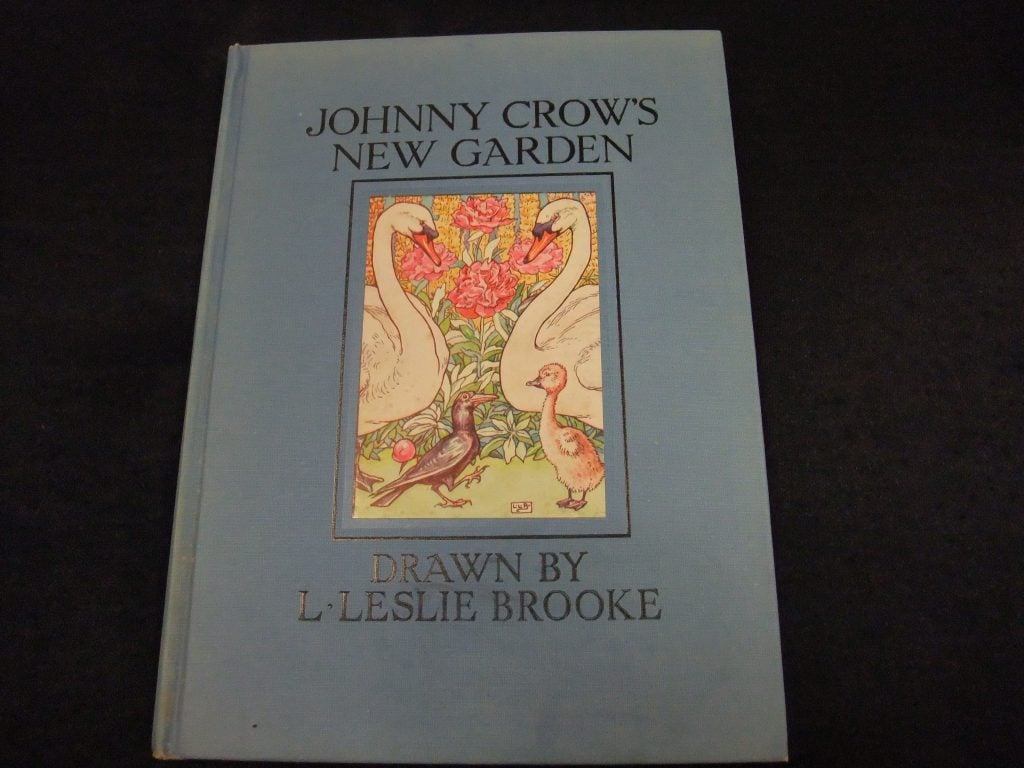
Johnny Crow’s new garden (1935), cover
Leslie Brooke and Beatrix Potter were two stand out creators of the Golden Age of Children’s Books primarily because both focused on the integration of words and pictures. In effect, each created a series that prioritised the child reader instead of the strategy used in the sumptuous gift books, which showcased artwork of notable artists in collections of fairytales.
Beatrix Potter engaged her readers with her farmyard series beginning with The Tale of Peter Rabbit, while Leslie Brooke created his playful Johnny Crow’s Garden series. The established British children’s book publisher, Frederick Warne, published both artists and encouraged artistic techniques that departed from the late 19th century technique of images produced from etchings.
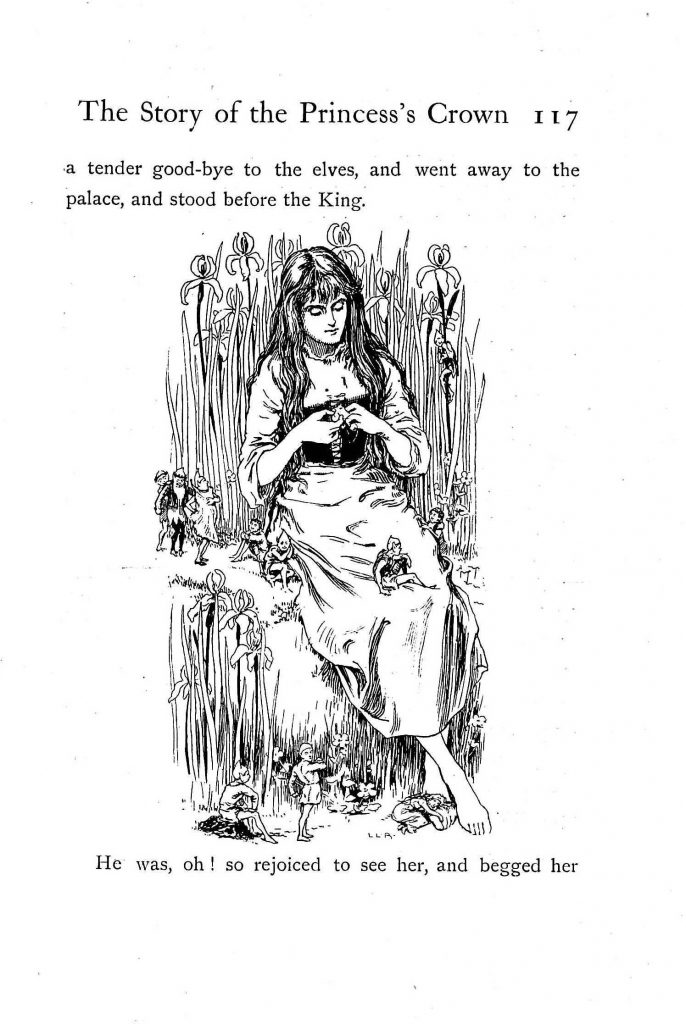
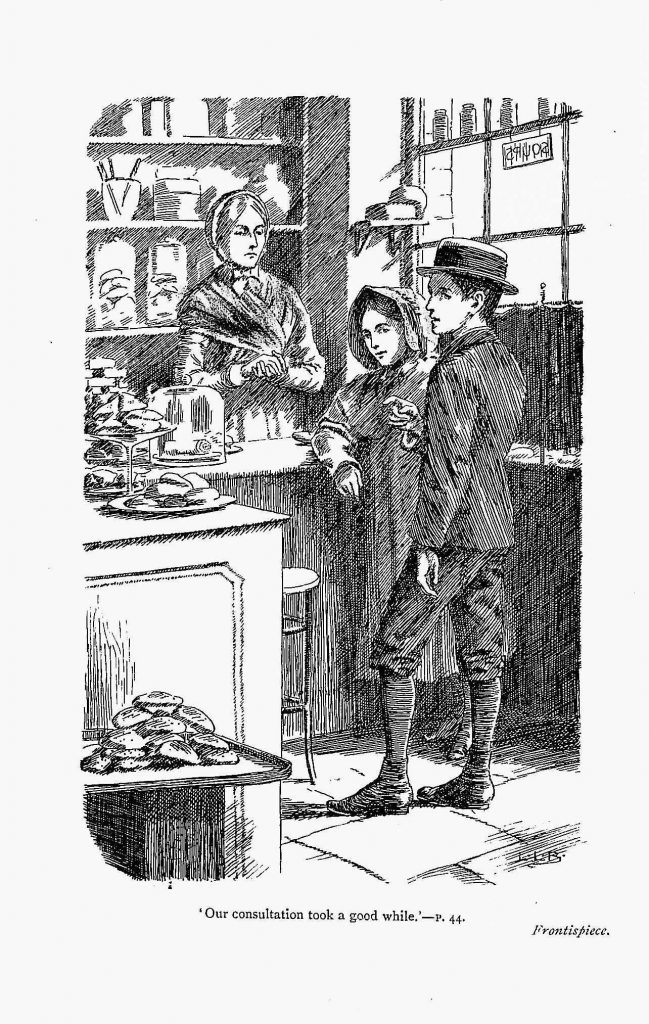
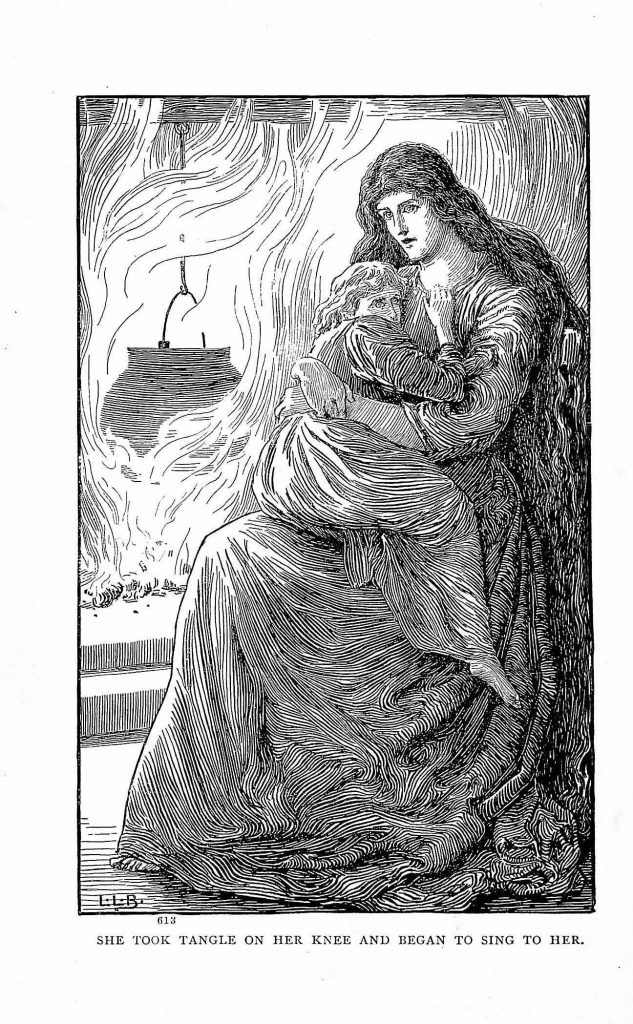
(i) The Story of the Princess’s Crown from Brownies and rose-leaves (1892) by Roma White; (ii) The carved lions(1892) by Mrs Molesworth, frontispiece; (iii) The light princess and other fairy stories,by George Macdonald (1899)
In the last decade of the 19th century Brooke illustrated works by Mary Molesworth, George MacDonald, Roma White and others. His style at this time takes on a serious tone and reflects the trend to include etchings to illustrate children’s texts, in contrast to his later unique humorous illustration.
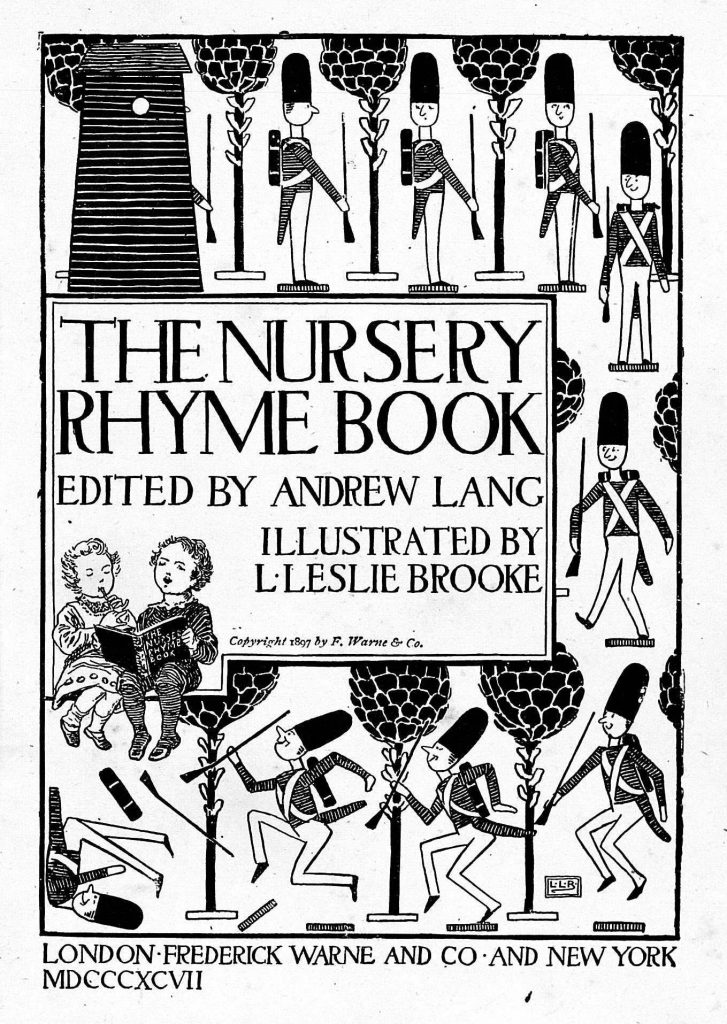
The nursery rhyme book (1897), title page
But in 1897 Warne suggested Brooke illustrate Andrew Lang’s The nursery rhyme book and it is here that we see the beginnings of humour, space and movement in his illustrations. For the first time Brooke was given the opportunity to design the total book and we see his playful side in the bold black and white line work on the title page. The nursery rhyme book was a commercial success, enabling Brooke’s preference for illustrations that reflect his unique humour.
Leslie Brooke’s humorous artistic style has been likened to yet another great of children’s literature, Randolph Caldecott. The storytelling tradition of Randolph Caldecott, the 19th century illustrator featured in an earlier blog, contain compositions that combine humour, movement and space.
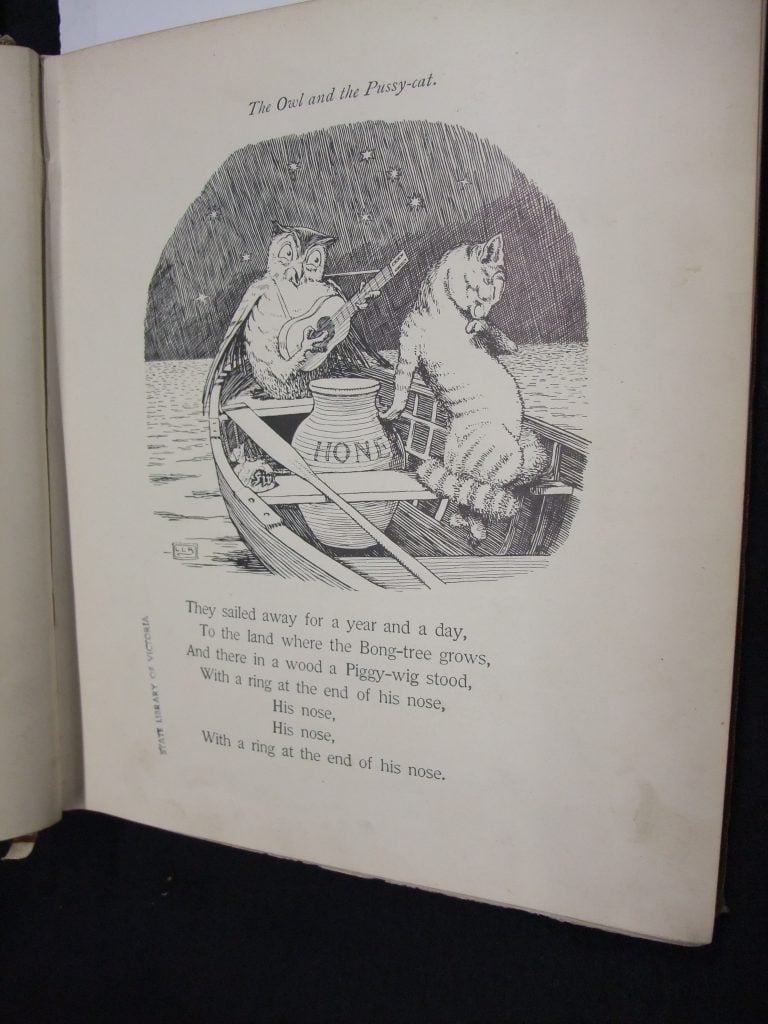
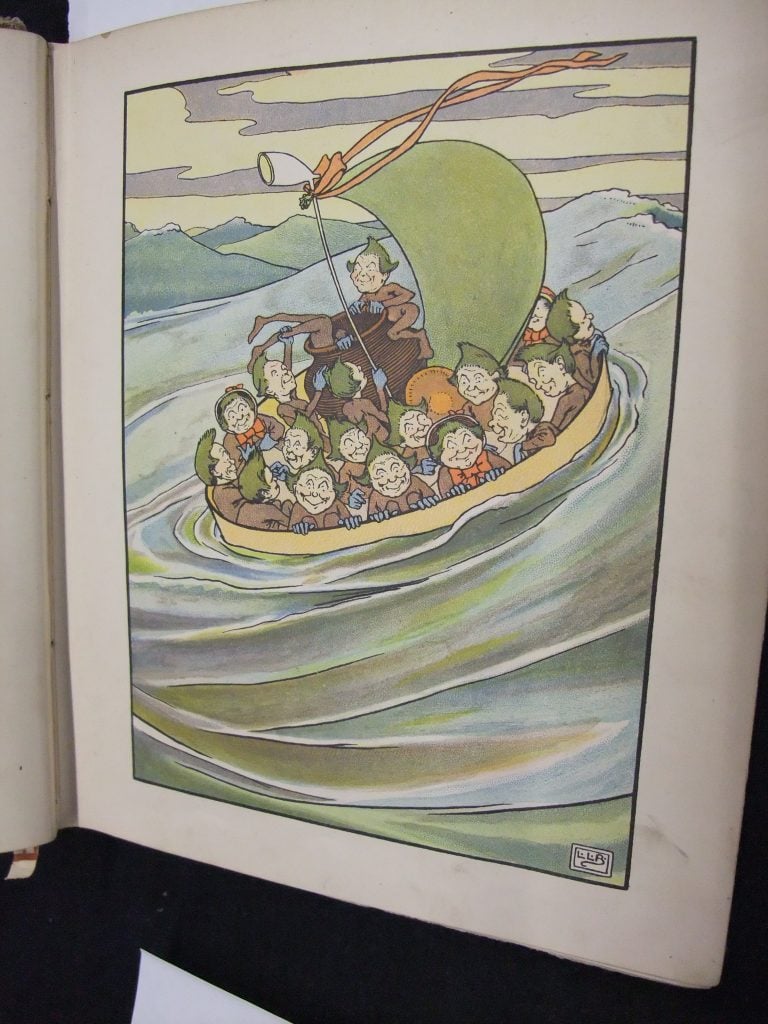
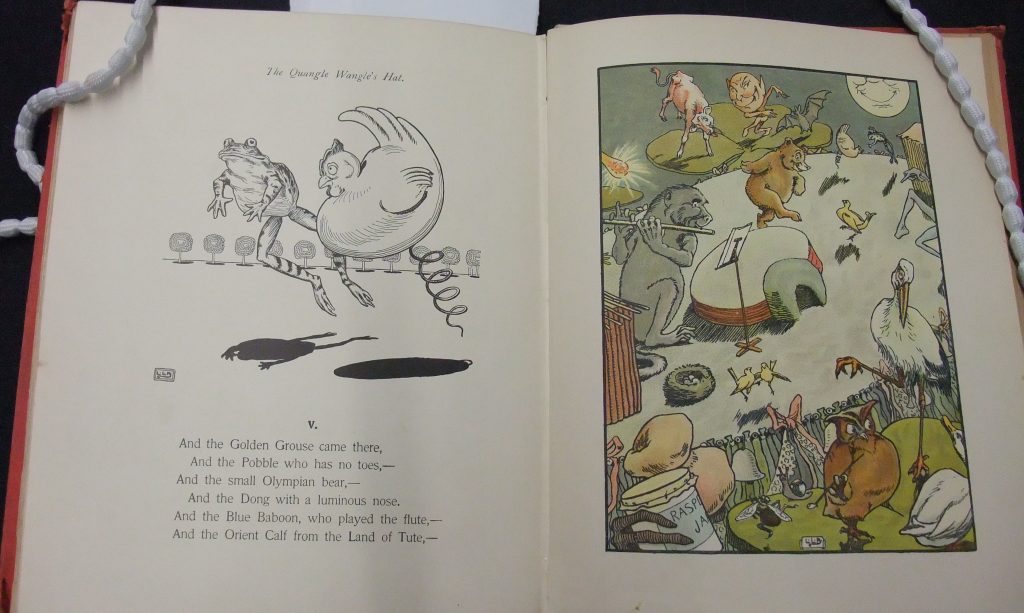
The Owl and the Pussy-Cat; The Jumblies, and The Quangle Wangle’s Hat; double page, from Nonsense songs [19–] by Edward Lear
Brooke’s career developed further when Warne suggested he illustrate Edward Lear’s Nonsense songs at the turn of the 20th century, using a combination of watercolour and line block drawings in pen and ink. In the Introduction to Brooke’s edition of Nonsense Songs Frederick Warne notes that the timeless nature of Lear’s humour will touch another generation with Leslie Brooke’s illustrations.
Brooke’s illustrations to the rhymes The Owl and the Pussy-cat, The Jumblies, and The Quangle Wangle’s Hat are now iconic. During this period Brooke developed a format combining colour plates using the halftone process designed to optimise reproduction of watercolour originals, with line block drawings.
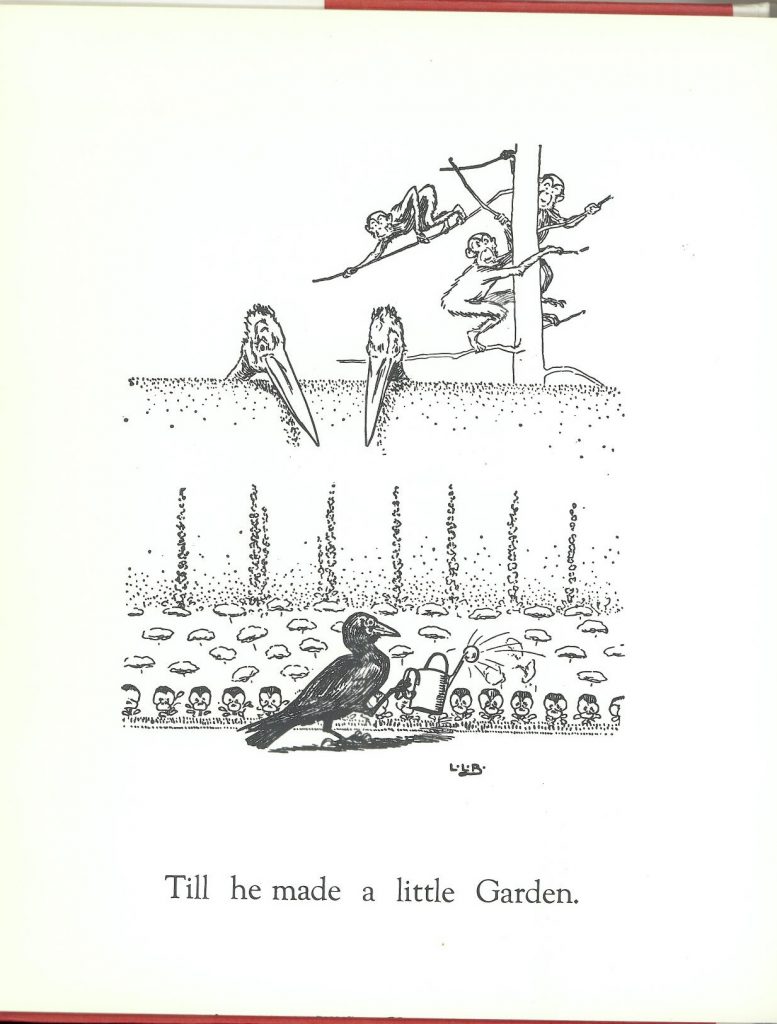
‘Till he made a little garden’, fromJJohnny Crow’s Garden (1903)
Warne agreed to Brooke’s idea for a series of his own and in 1903 the first book Johnny Crow’s garden was published. Understanding Brooke’s own childhood and the importance of family life and family tradition enhances the Johnny Crow theme.
Born in 1862 Leonard Leslie Brooke grew up in Birkenhead across the river from Liverpool which was semirural at the time. Brooke had two siblings, a brother and sister, all three went to school nearby rather than attend boarding school. Every Sunday the family played an imaginative rhyming game where each child would name an animal then their father would create a rhyme set in ‘Johnny Crow’s Garden’.
Much later Brooke played this game with his own son and at his wife’s suggestion this wealth of family rhymes became the impetus for Brooke’s three Johnny Crow books.

A crane caught in the rain, from Johnny Crow’s Garden (1903)
Johnny Crow’s Garden (1903) is a story about a crow called Johnny who built a garden and welcomed many animals to join him there to enjoy it. Brooke harmoniously combines humour between image and verse. When Johnny Crow begins he is watched curiously by potential invitees. When it suddenly rains Johnny Crow studiously follows the crane and his umbrella.
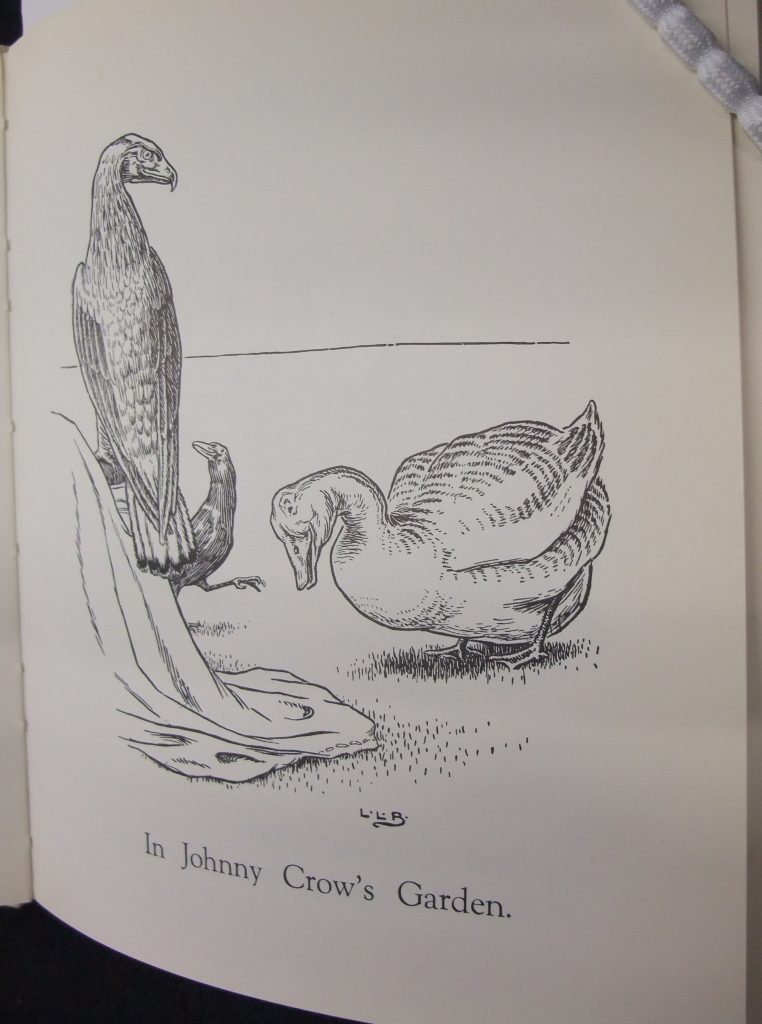
‘Eagle and Goose, from Johnny Crow’s party [1907]
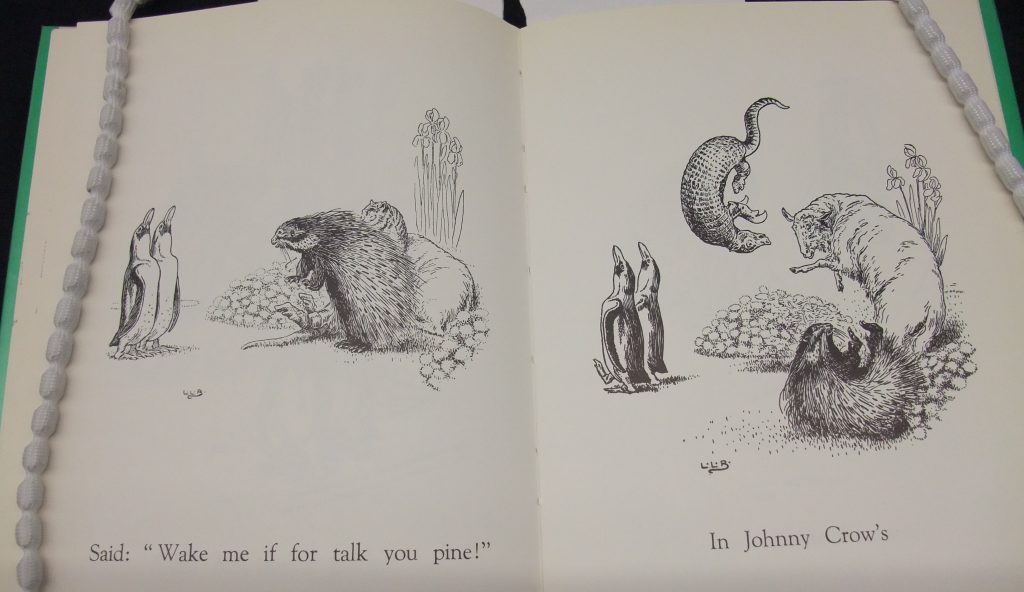
‘Porcupine said Wake me…’ from Johnny Crow’s party [1907]
In Johnny Crow’s party [1907] Johnny Crow applies his rake to create an improved garden where he hopes to meet again many of the characters from the first book, in addition to new animal friends. In the image of the eagle and the goose, Johnny Crow believes ‘the eagle looked quite regal’ and the porcupine entreats ‘wake me if for talk you pine!’
The clothed animals with wonderfully expressive eyes act out the nonsensical lines. Almost every line of text has its own picture full of action and humour and Brooke’s trademark decorated endpapers correspond to content in Johnny Crow’s new garden (1935).
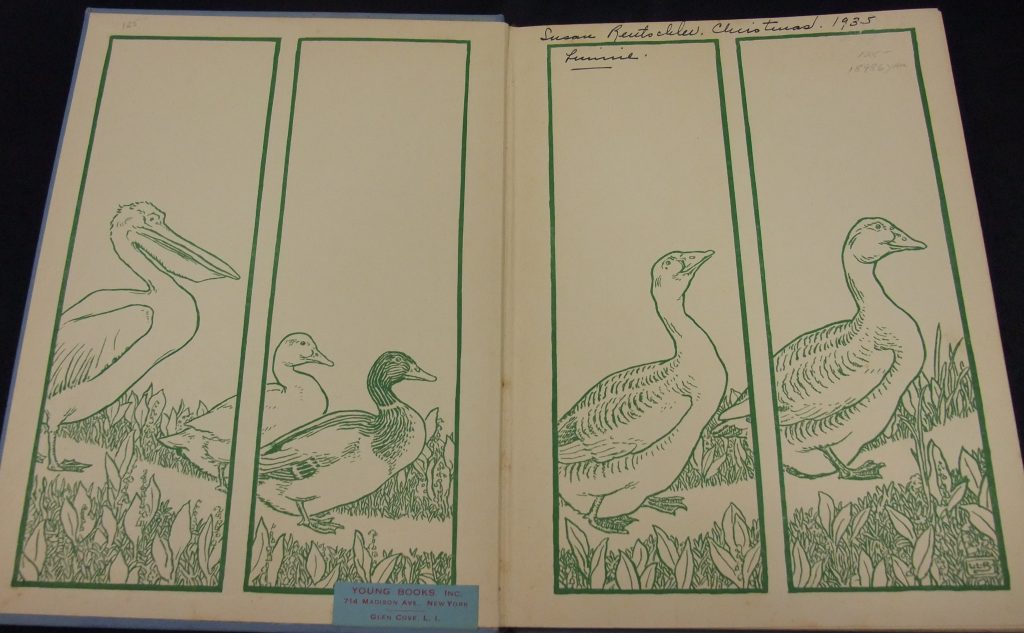
Decorated endpapers, from Johnny Crow’s new garden (1935)
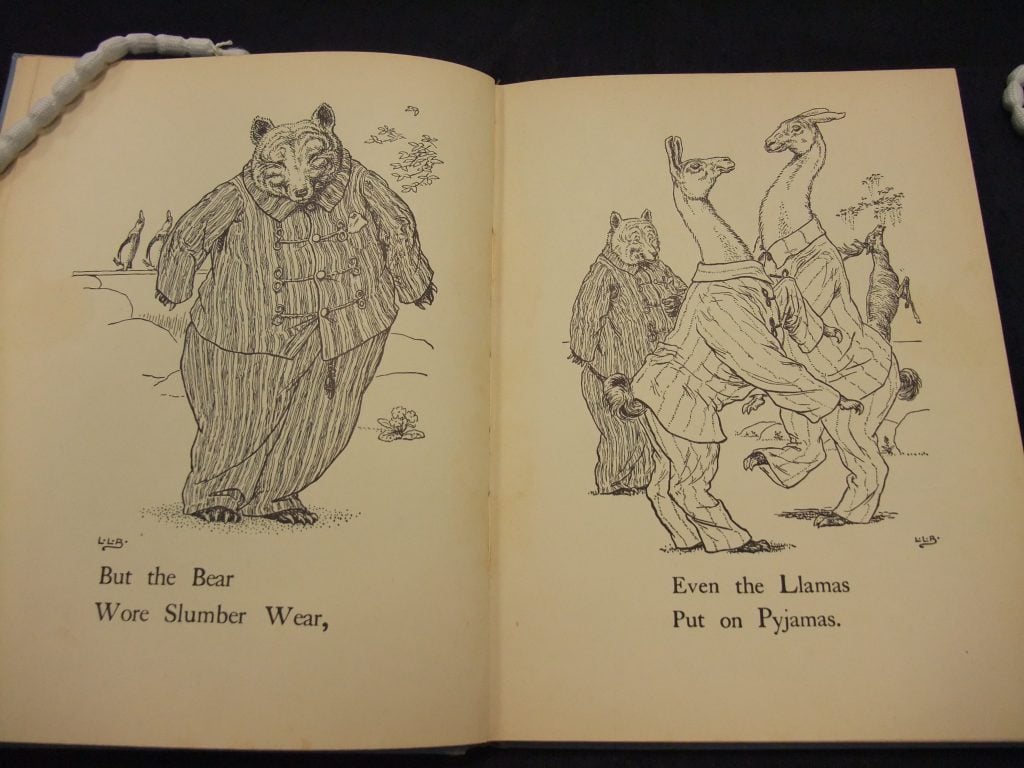
‘But the Bear wore slumber wear, Even the Llamas put on pyjamas’, from Johnny Crow’s new garden (1935)
Between publications in the Johnny Crow series, Brooke illustrated nursery rhymes. Titles include The truth about Old King Cole and other very natural histories [1910], Oranges and lemons [19–], Ring o’ roses [1922], and The story of the three bears [19–] amongst others.

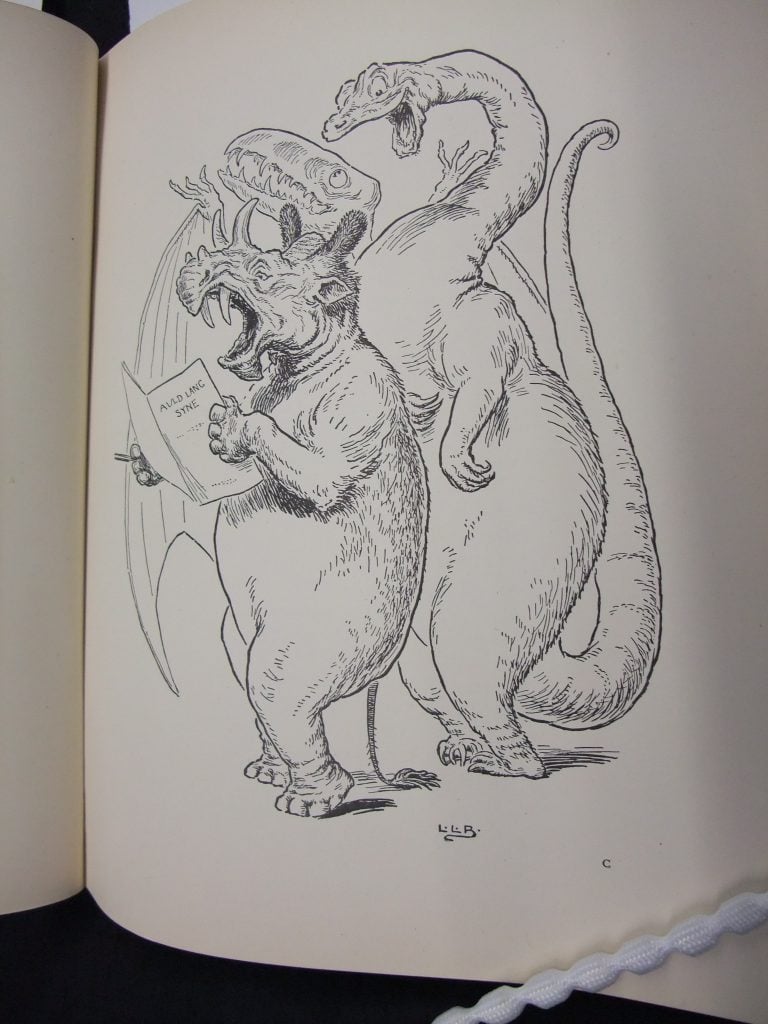
Cover, from The truth about Old King Cole; (ii) The dinosaurs dance, from The truth about Old King Cole
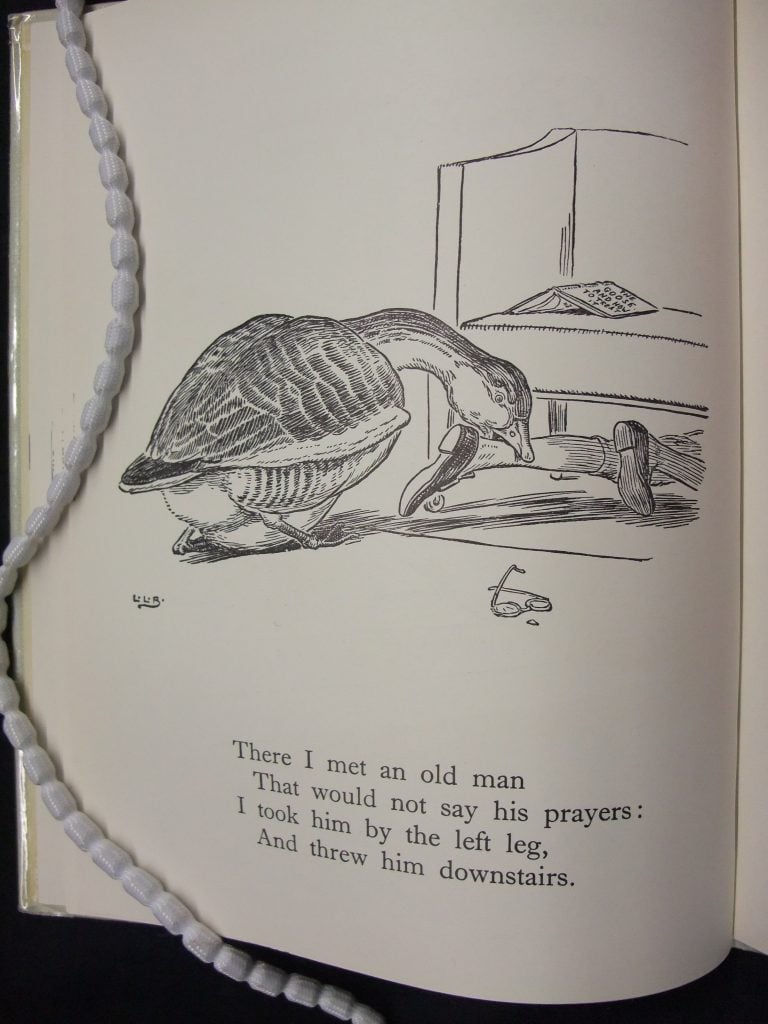
Goosey goosey gander from Oranges and lemons
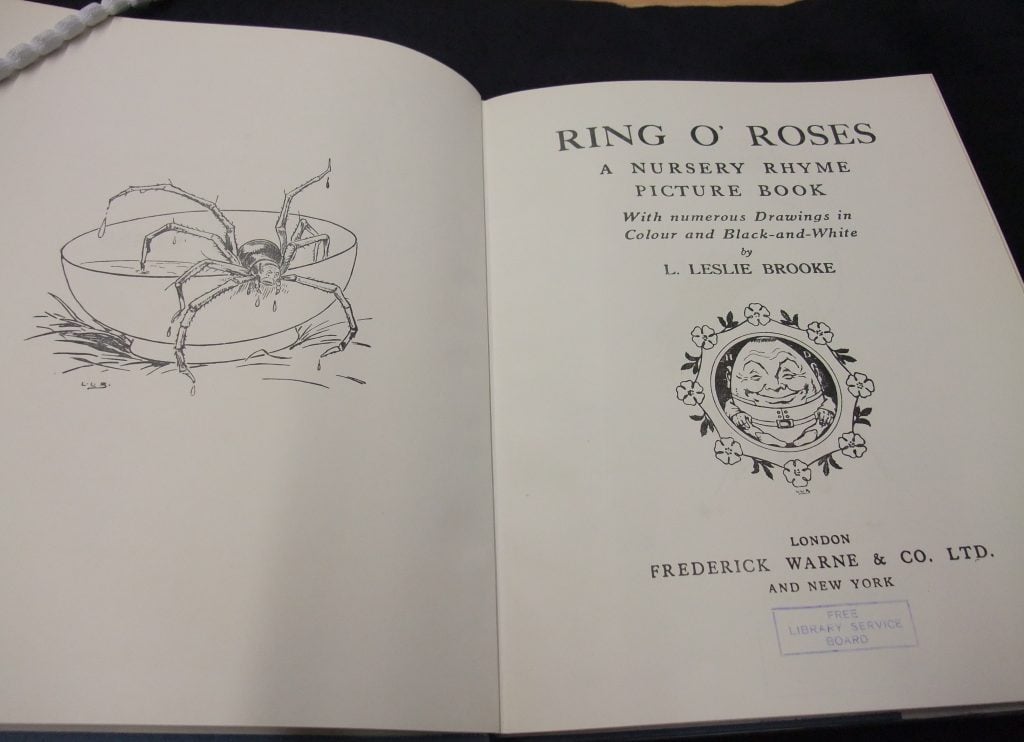
Title page of Ring o’ roses [1922]
Title page of Ring o’ roses [1922]
Each are well known nursery rhymes to which Brooke brings his unique humour. Every moment from the dinosaurs dance, to Goosey gander pulling the old man’s leg, the spider on the Ring o- roses title page to the outrage of the three bears and their nonchalance watching Goldilocks run away, contains a cheeky, irrepressible irreverence.

‘Somebody has been sitting in my chair’, from The story of the three bears [19–]
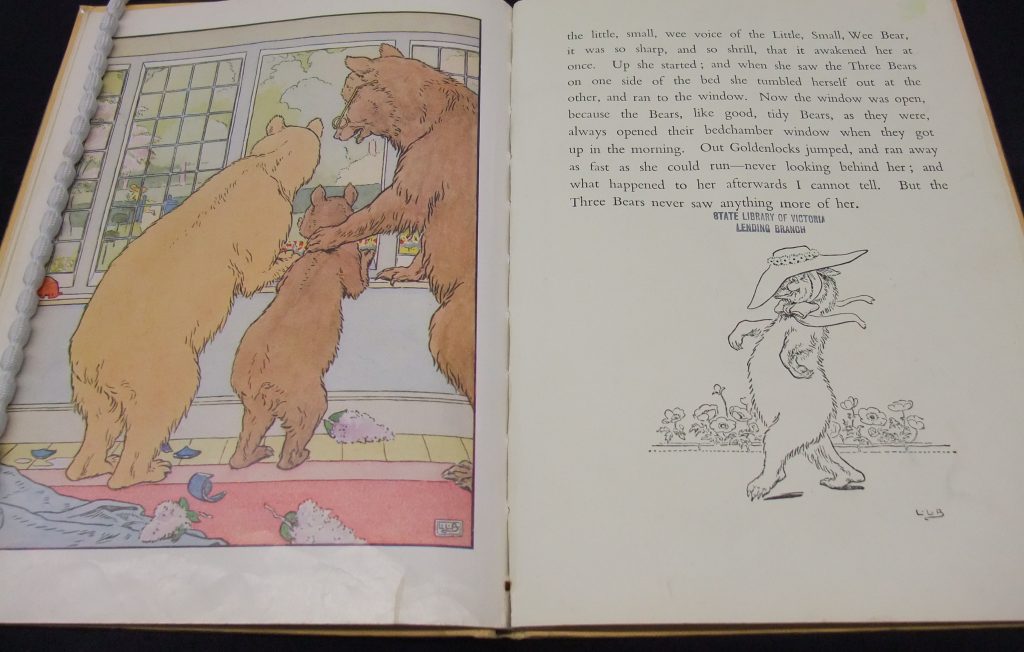
Watching Goldilocks running away, from The story of the three bears [19–]


I was a child in the 1950s and had copies of the Johnny Crow books. I loved them. Thank you for featuring Leslie Brookes
Thanks Anne, Brooke’s textual and illustrative humour is very engaging. I’m so glad you enjoyed the blog.
Thank you, I enjoyed this post.